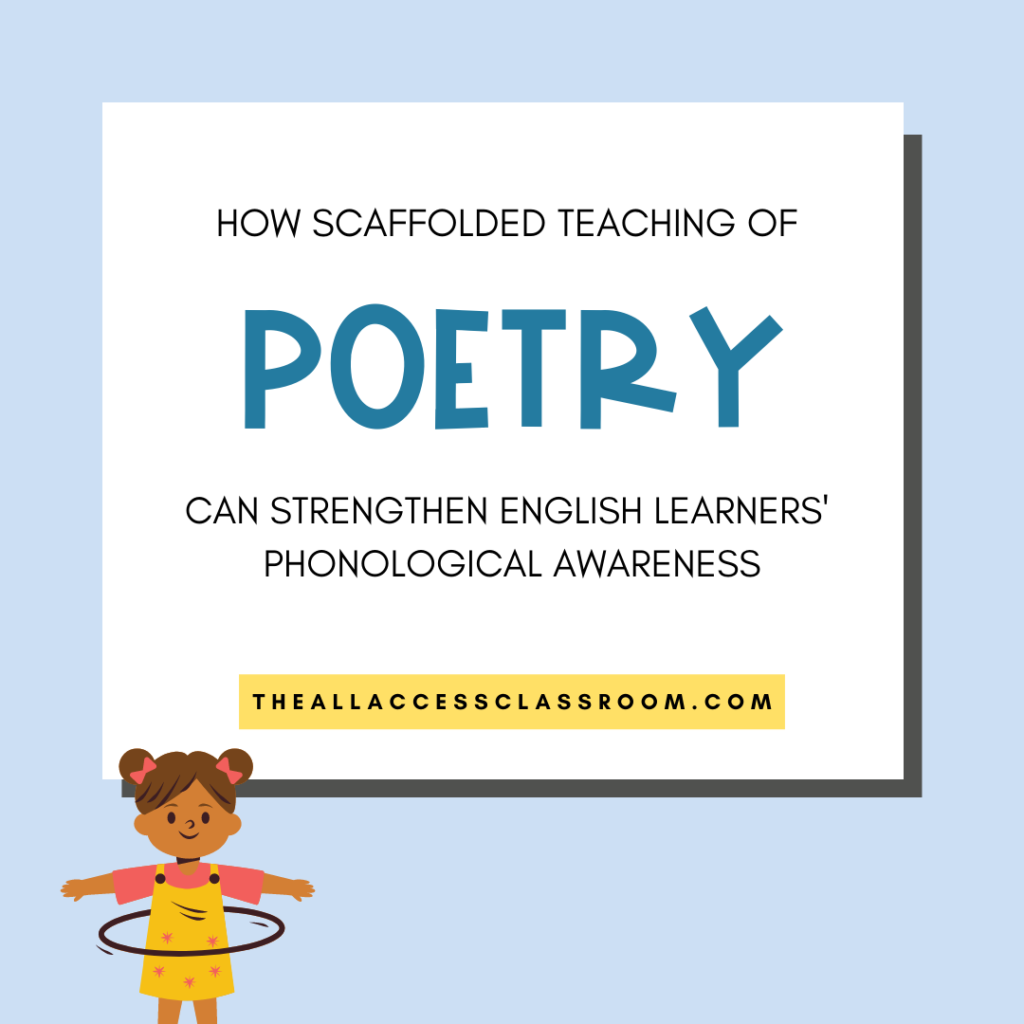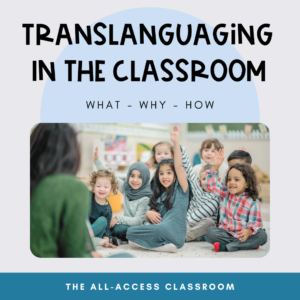We’ve always taught poetry. It’s just a part of what we do. But did you know that we can use scaffolded teaching of poetry to support our multilingual learners in a super important way?
Poetry offers a fun and engaging means of helping our learners build the most essential initial building block of literacy – phonological awareness. There are some simple techniques we can use to take advantage of poetry instruction as an opportunity for English language support.
First, let’s have in mind some ways we can give our English learners (ELs) equitable access to the poetry we share with them.
What does scaffolded teaching of poetry look like?
When working with multilingual learners/ELs, it is always important to ask: How can I reduce existing language obstacles, so that the students can understand what is being taught? Is there a temporary instructional support (scaffold) I can put in place to strengthen comprehension and increase engagement? Ideally, scaffolded teaching is presented in a way that doesn’t lessen the rigor or content, but adequately guides students in finding success in learning that content.
The better we know our learners and their language development journey, the more effective our scaffolded teaching can be.
Here are some scaffolding methods to consider using with your poetry instruction:
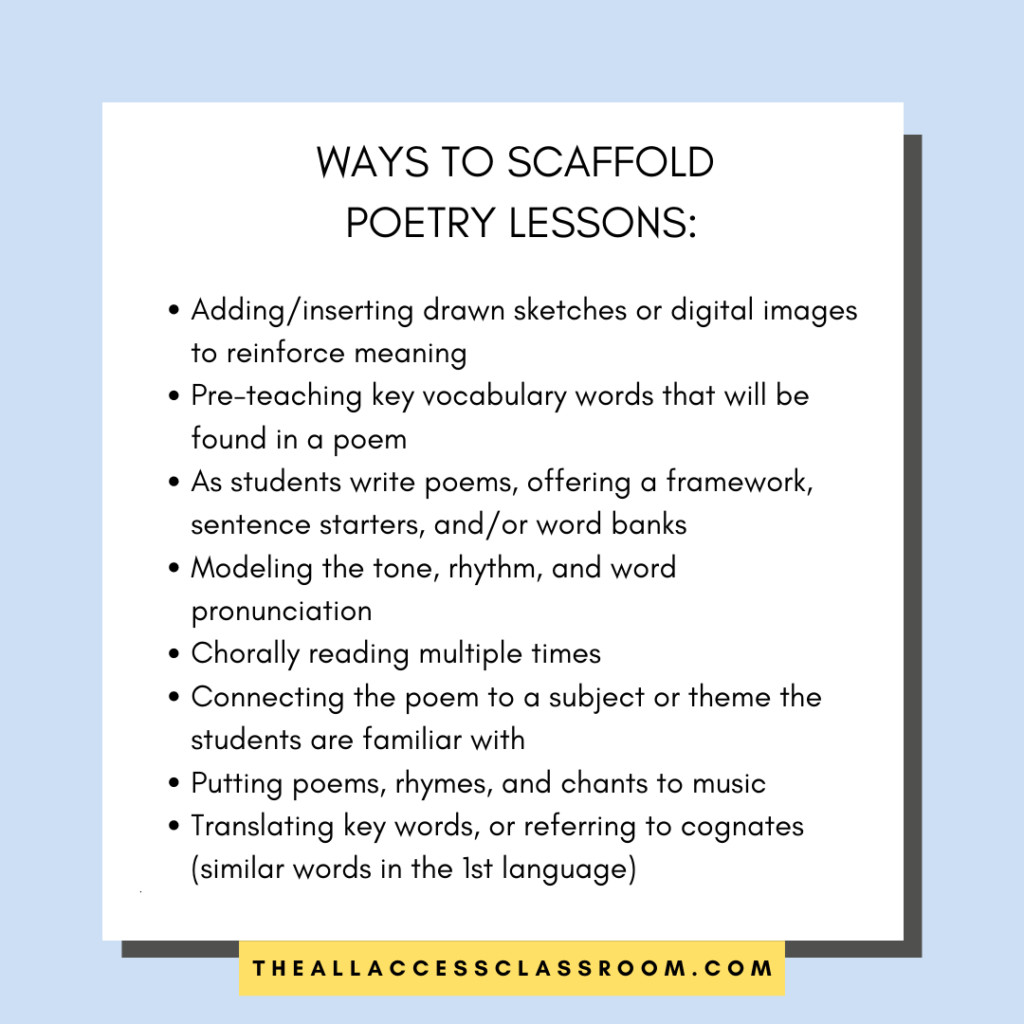
What does phonological awareness mean, again?
We know a lot about how reading develops. The first skill that emerges for a child learning to read is phonological awareness. It is how one understands the structure and patterns of oral English sounds. This includes identifying syllables, onset-rimes, and phonemes (the smallest units of sound). We know that words must be processed and spoken before they can be read.
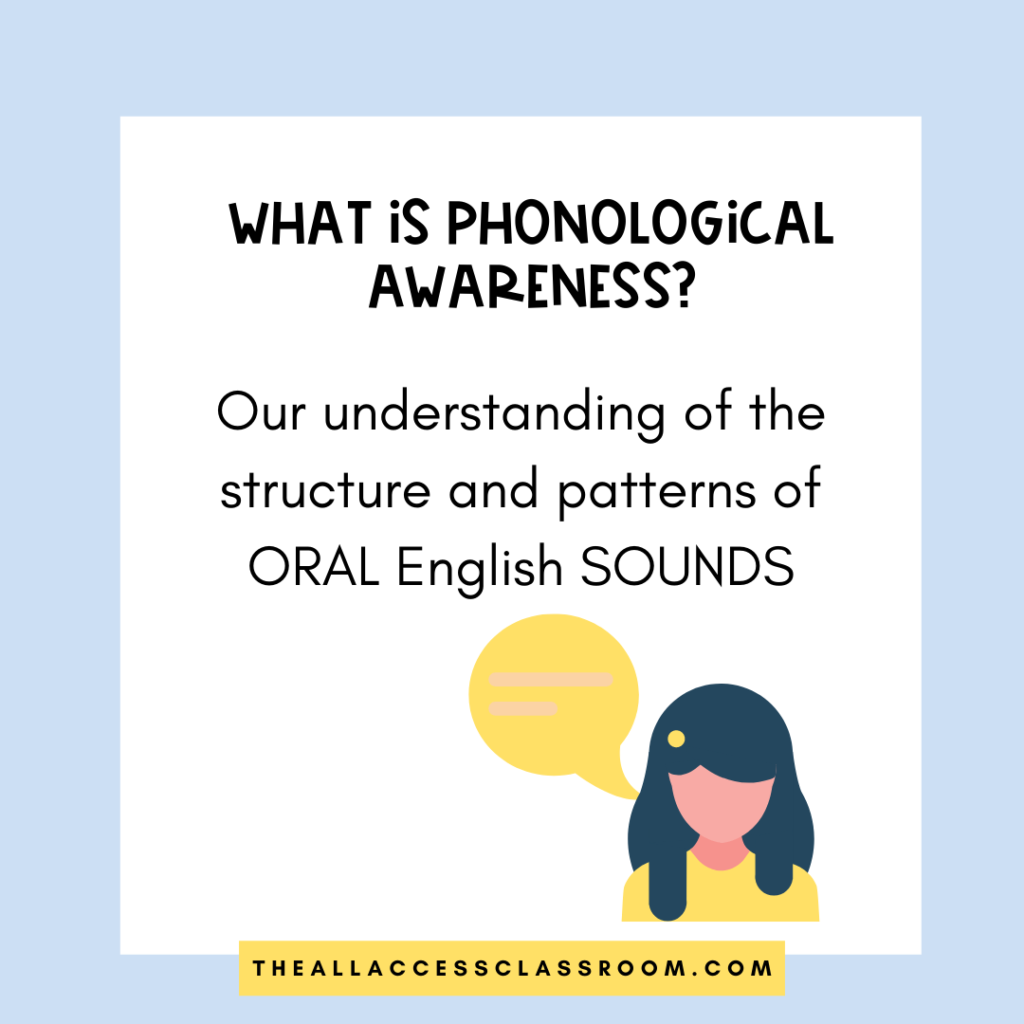
Here’s the thing. In order for a learner of English to be ready to advance into learning letter-sound relationships, he must be well-familiar with the sounds of spoken English. He must be able to produce and differentiate those sounds, so that they can be distinguished from each other in the context of a word.
However, some of our English learners come into our classrooms having this foundation in literacy acquisition established–in another language. They perhaps haven’t been exposed to spoken English long enough to have become familiar with this additional system of sounds.
Therefore, we can’t expect these learners to demonstrate as much oral language production or success in phonics instruction without first giving sufficient time to phonological awareness. The good news is, we can explicitly teach the skills they need! And poetry is one way to do it!
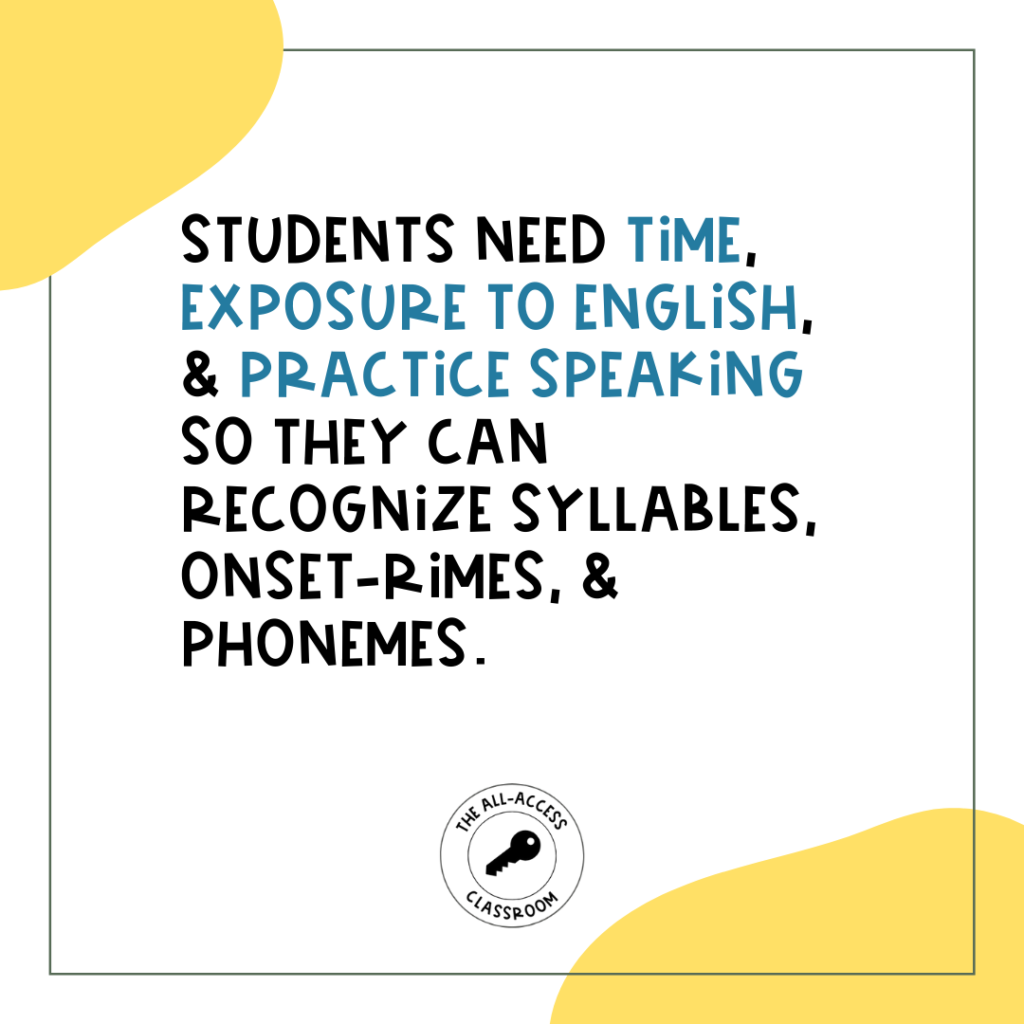
Rhyming Poetry for Kids is an Essential Resource to Include in Your Reading Instruction with ELs
Oh how lovely! So many fun, engaging poems just happen to lend themselves to practicing phonemic awareness skills with students! Rhyming poetry for kids, although just one form of poetry, provides a great context for this. Any time you read rhyming poetry aloud, students are hearing sounds repeated, sounds in context, and sounds related to one another.
Additionally, you can teach using poems that have alliteration. You can practice counting syllables with words within the poem. Giving students the opportunity to repeat and chorally read with you will benefit their phonological awareness growth.
Have Some Nursery Rhymes, Songs, and Chants At-the-Ready
There’s a newcomer Kindergartener at my school who has just emerged from her “silent period.” Her first oral language in English has been…nursery rhymes, songs, and chants! Her teacher has been using these frequently during classroom routines and transitions.
The repeated, predictable patterns placed in a low-stress environment has led to the student having comfortable opportunities to practice her new language. She may not be understanding all the words and lyrics. But the fact that she is becoming comfortable with producing English sounds is a big indicator that her phonological awareness is growing!
Benefits of Introducing Limericks and Narrative Poetry for Kids Who Are Learning English
Beginning ELs are learning both the sounds and vocabulary of English at the same time. When they are presented with a poem that already has a familiar context or presentation, it can reduce their cognitive load. In other words, they will be able to give more brain energy to practicing new sounds, and less time trying to comprehend the poem. Context is always super important to give ELs.
Some types of poetry that will instantly provide this context are limericks and narrative poems. Especially if accompanied by some visual support/images, our ELs will quickly pick up on the content of these poems, and give more attention to sound differentiation and oral language practice.
Teaching Strategies
So, what about how to explicitly teach phonological awareness while teaching using these poems? Here are some suggested strategies:
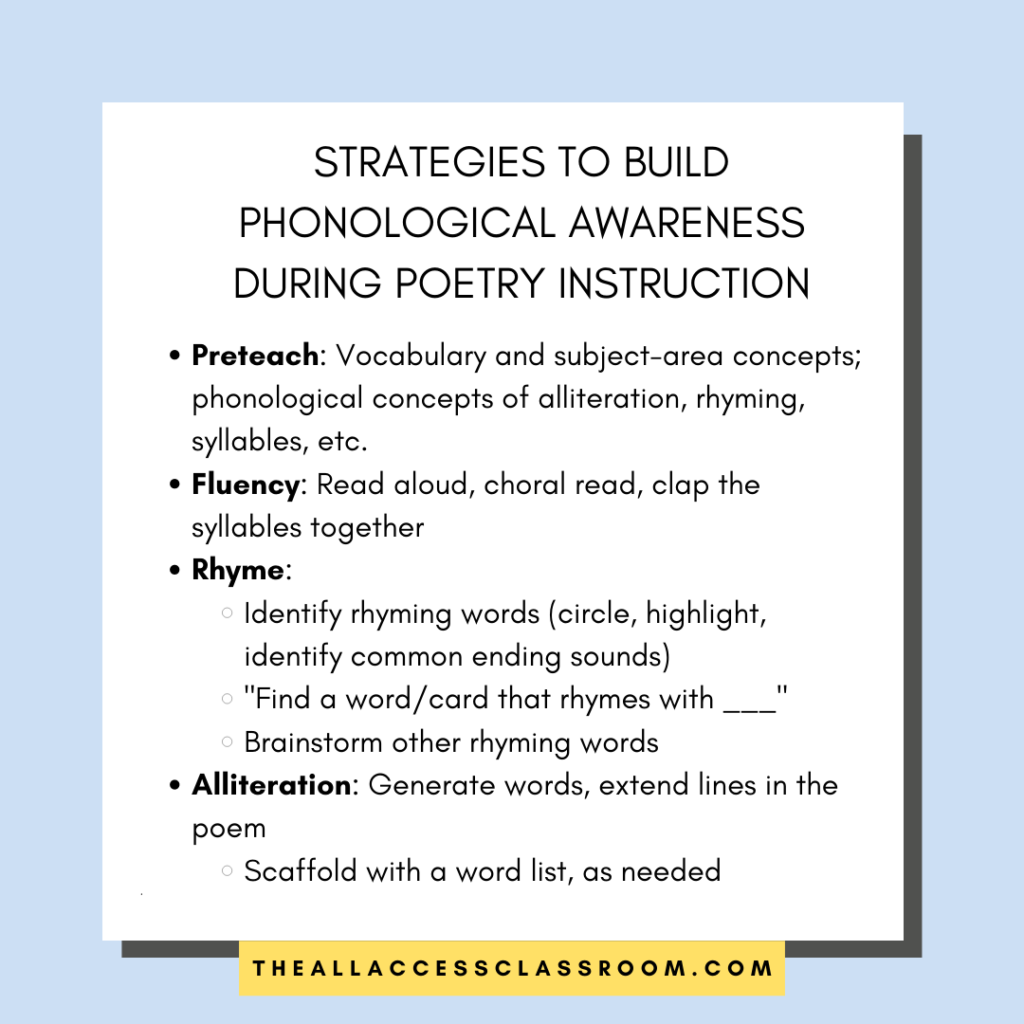
Things to Remember to Make Scaffolded Teaching of Poetry a Purposeful Activity
Again, context goes a long way to making content comprehensible for ELs. When possible, try to integrate poetry, language development, and your subject-area content. Your students will have even greater ability to connect to, understand, and enjoy your lessons.
Keep in mind that all learners enter your classroom with a wide array of background experiences and prior knowledge. By connecting new learning to what is already familiar, we can open the door for students to celebrate their cultures, identities, and strengths.
Poetry lessons hold so much potential to nurture students academically and holistically. Keep it as a fixture in your classroom, for sure!
Want to Learn More?
Poetry in Kindergarten – by Zeba at Kindergarten Cafe
Read-Aloud Strategies that Support English Learners – The All-Access Classroom
Would you like to learn more strategies for supporting your English learners? Join me on Instagram and Facebook, where I share “mini PDs” regularly!


